My Backyard Canadian Beaver
Don't get your knickers in a knot. This IS NOT a nsfw post... I do really want to show you the beaver that frequents my backyard.
Truth be told, ages before the US election last year, I named this guy Donald because when he gets caught in the wind, a tuft of his orange fur sticks straight up on the top of his head. :D
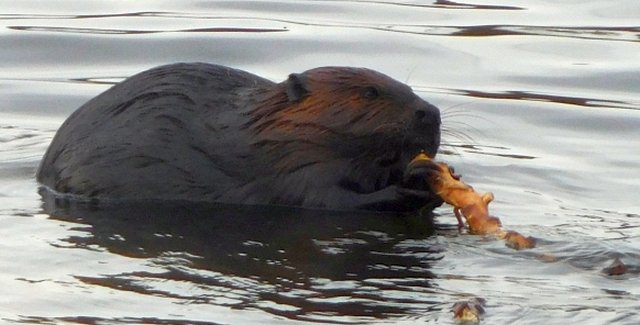
We call this creature a beaver, but its scientific name is "Castor Canadensis".
For once, I'm actually not joking.
As far as the beaver's proper name goes, it doesn't get much more Canadian than that. In fact, the beaver was officially recognized as a legitimate animal symbol of the sovereignty of the country of Canada, when it received royal ascent in 1975.
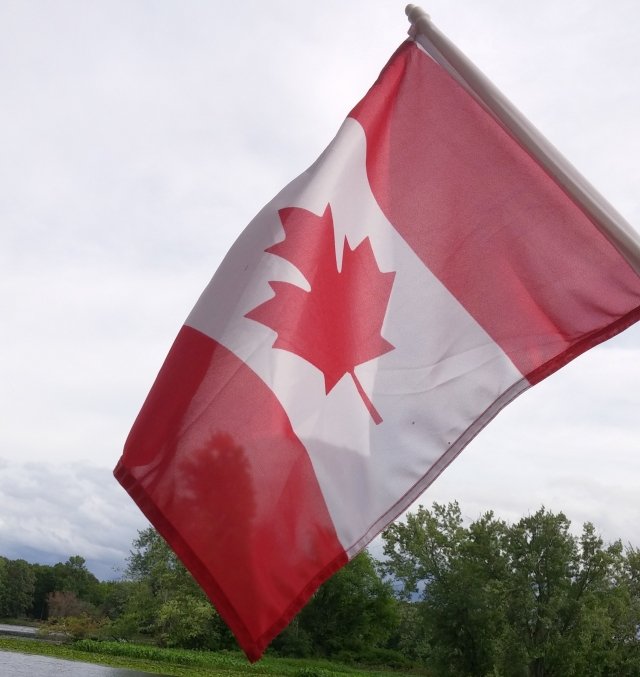
Now, its image can be found on one side of our 5 cent piece which is referred to as a "nickel"coin.
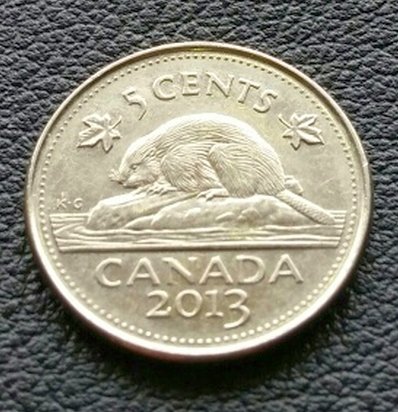
In all honesty, one could make a valid argument, that the country of Canada wouldn't be what it is today, without this industrious rodent.
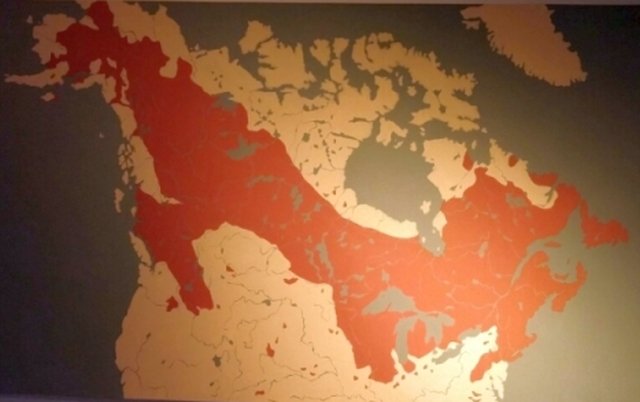
This is a map of Canada and the upper part of the United States. All the areas coloured in burnt orange, identify the geographical area related to fur trapping activity in the 1600 and 1700's. This was made possible by the connectivity of fresh water lakes and rivers which span from east to west and join one coast to another, as you can see. (The significant waterways are the blue masses and lines on the map.)
Beavers were plentiful and they were aggressively trapped by both the French and the English for their fur and also for an oil that they produce called castoreum. This oil is used by the beaver to protect and seal their coats, but it was also heavily used in the perfumery industry.
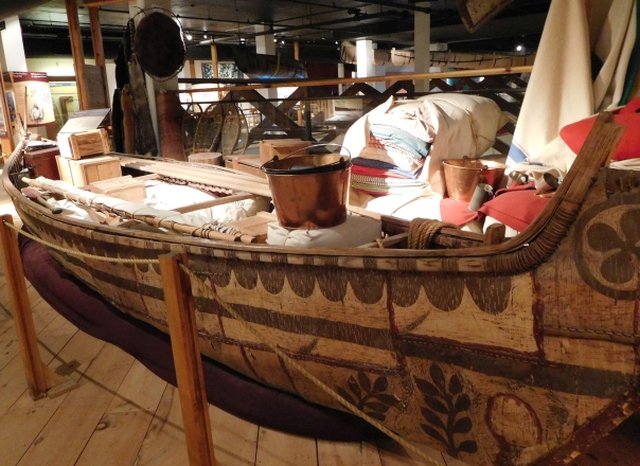
Behind and above this canoe, hanging on a stretching rack, is a beaver pelt. This canoe was a typical canoe belonging to an early Canadian pioneer. It would have been laden down with all manner of supplies and fur pelts to trade with or sell.
It is estimated that the Hudson's Bay Company was shipping 80,000 beaver pelts from Canada to Europe every year in the mid-1600's. (I don't care who you are...that's a lot of beaver.)
As a direct result, the beaver was almost driven to extinction.
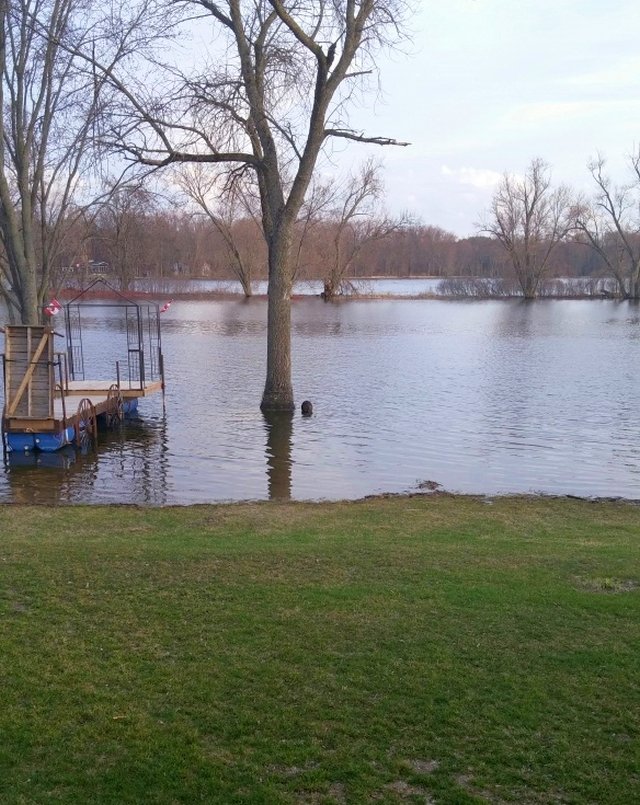
This is my backyard. It's the middle of April and the snow has just melted about 2 weeks ago. We live on a large waterway system that is a river and is managed by a series of locks. Currently water is being moved from further up stream and that is causing it to swell beyond its normal banks. This time of year, our dock is sitting in water, but it's actually on land, which will be visible again when the water recedes in a few days. You can see the beaver. He's standing beside the tree on the other side.
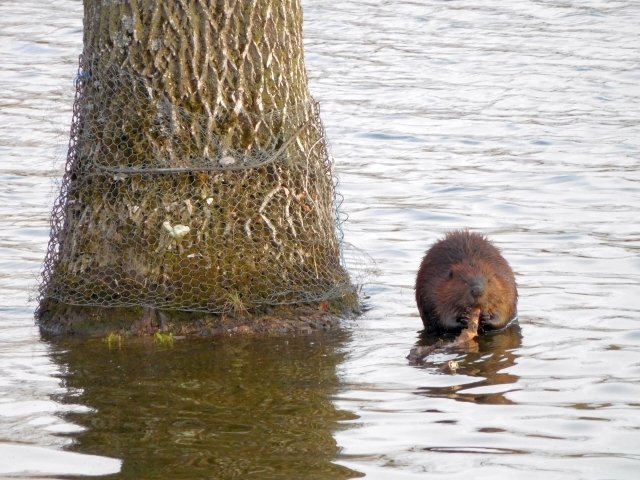
Beavers are semi-aquatic mammals. They live in large mounds of tree branches, limbs, rocks and mud which they build and repair from one year to the next. This structure is called a lodge. They have 5 fingers with claws and they have 5 toes which are webbed and have claws. They also have 2 sets of eyelids. The eyelid next to the eye is clear. This protects the beavers' eyes from debris when they are swimming underwater. Beavers can hold their breathe for up to 15 minutes at a time and they are excellent swimmers. A full grown beaver weighs between 45-75 lbs.
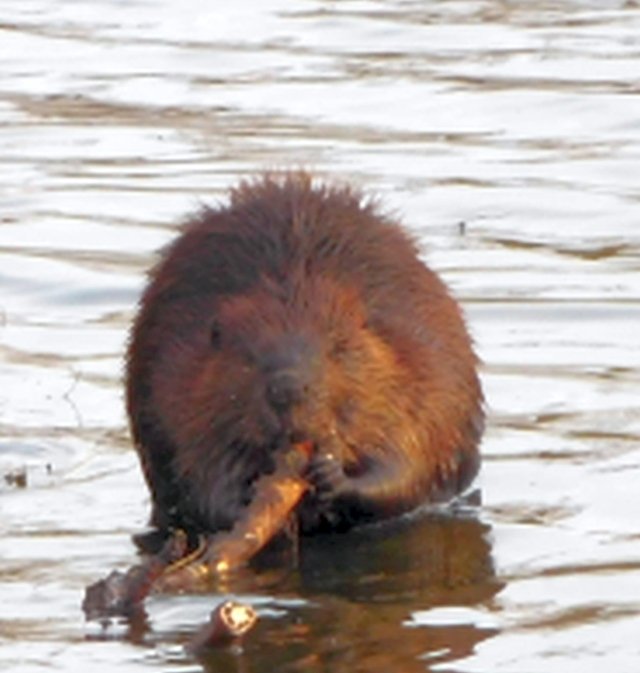
Contrary to popular belief, Beavers only eat the bark off of trees and roots and tender new shoots. They don't actually eat wood.
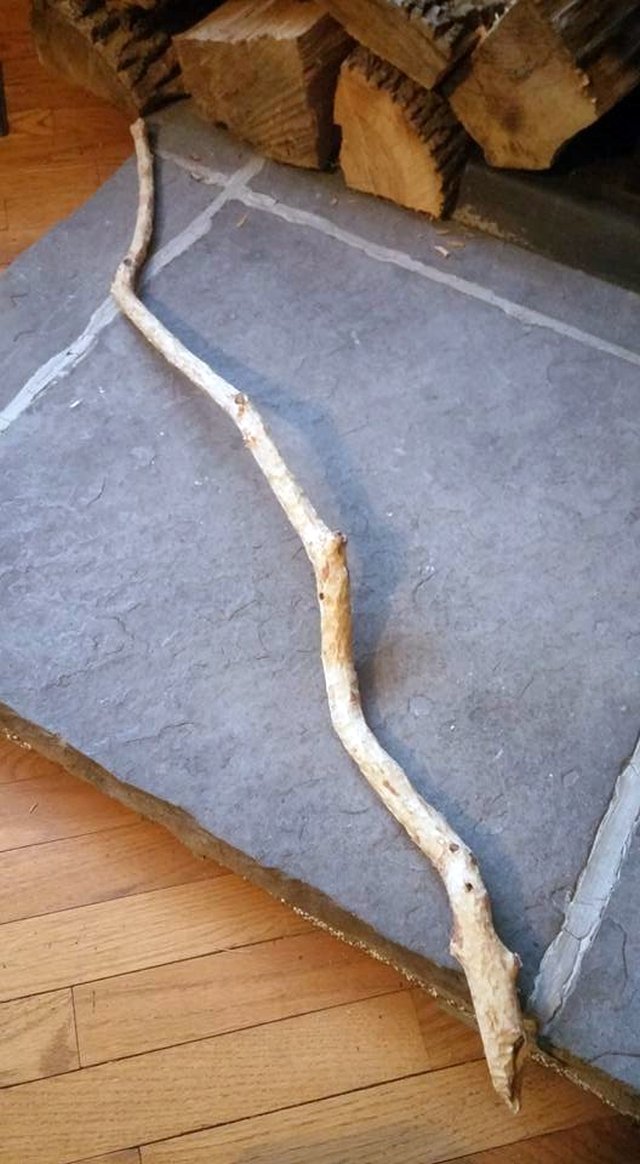
This is a tree branch which has been chiselled clean of all its bark by a hungry beaver.
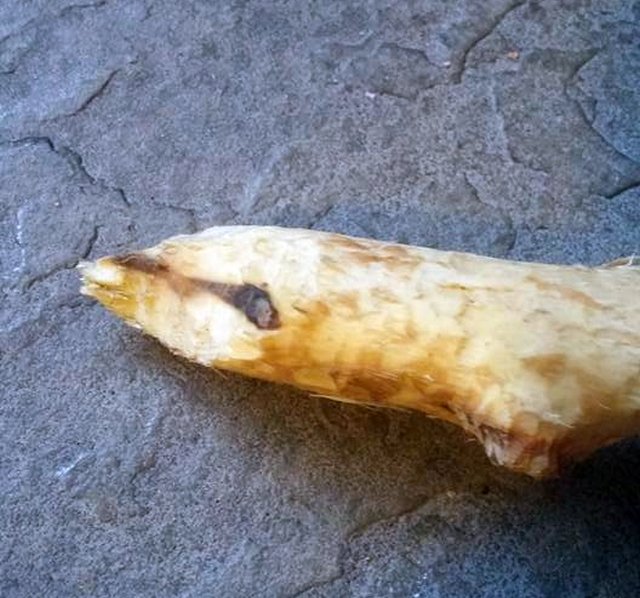
As you can see, Beavers have really sharp teeth and this one has eaten all the bark off this branch. Their teeth grow continuously during their entire lifespan and actually protrude outside their mouths. This lets them chew on roots underwater and still hold their breathe.
Beavers are sort of monogamous. They will stay with the same mate for 3 years and then they will part company and start again with another mate. Mating takes place in January, during a 24 hour time frame. Baby beavers, which are called kits, are born in mid-April. The offspring stay with their parents for 2 years before they leave and build a lodge of their own.
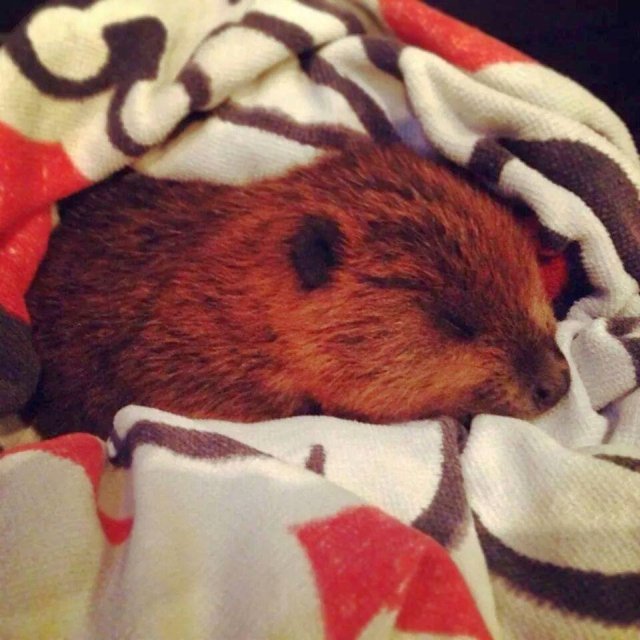
This is a baby beaver. Unfortunately it got separated from its Mother and required rescuing. Mom and Baby were re-united within a day and all turned out well.
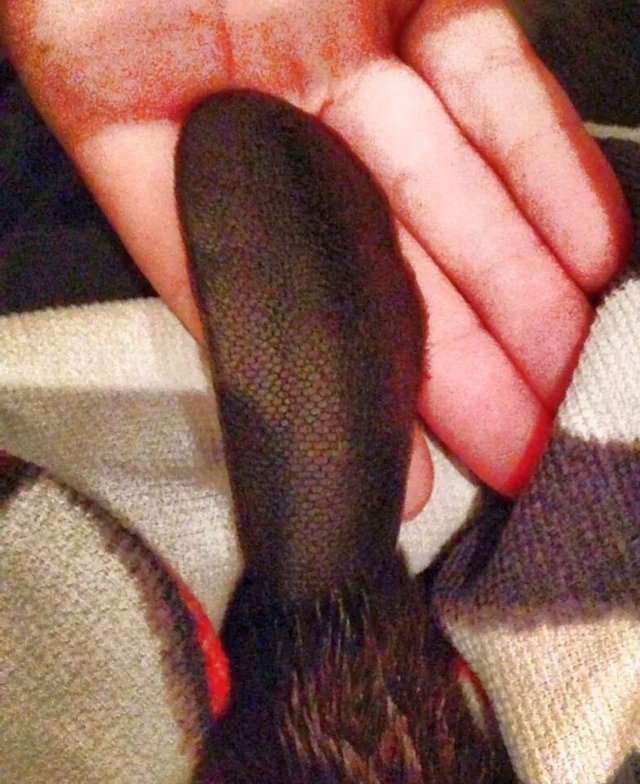
This is the baby beaver's tail. The tail has 2 main purposes. First, it's wide and flat which aid the beaver in swimming and secondly, they use their tails as a warning signal.
If the beaver is scared by something or wants to warn other beavers of eminent danger, it will slap its tail a few times on the surface of the water. This creates a loud noise which carries over the water for a great distance and it also creates a lot of distraction which lets the beaver swim away to safety.
(Both pictures of the baby beaver and its tail were taken by my friend L. Ferguson. She was also the one who rescued the baby beaver.)
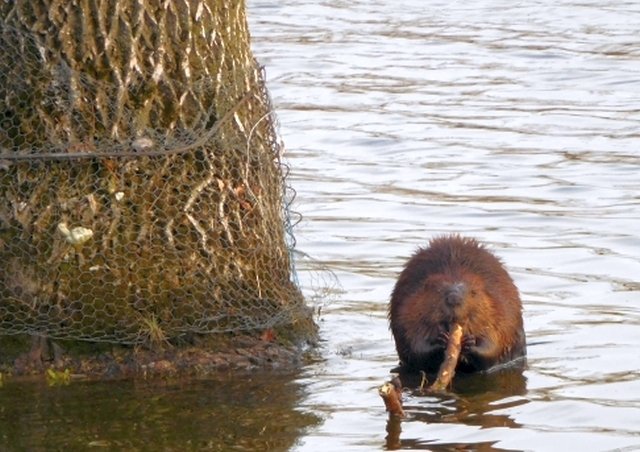
You'll notice that this tree is wrapped in chicken wire. This is protecting the tree from the beaver so that it doesn't eat the bark and kill the tree. You can see that the beaver's fur is quite thick. It has a double coat which consists of a short layer and a longer layer. You can see the longer fur as it's starting to dry and stick up.
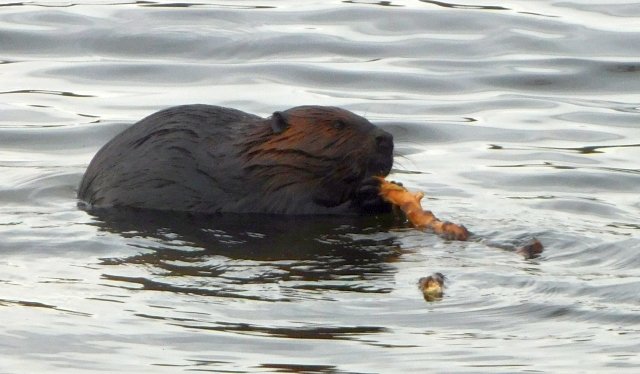
We typically observe this beaver in the morning just after dawn and then again around 7 pm at night.
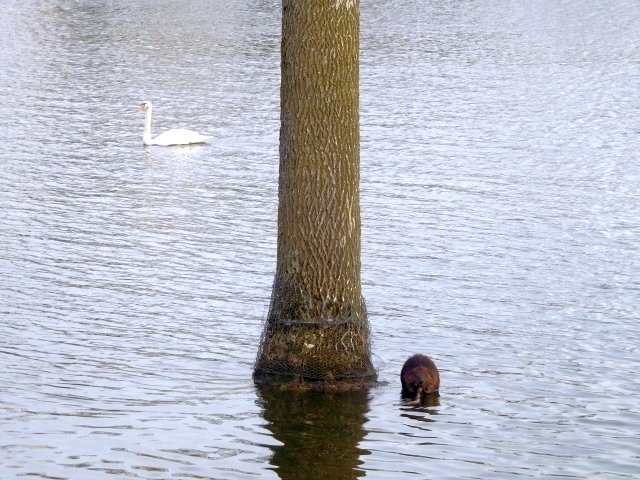
We consider ourselves to be quite fortunate to share this habitat with Mother Nature.
I consider it a great privilege to be a caretaker and an observer.
I welcome your comments and invite you to follow me on my journey.
~ Rebecca Ryan
great post @rebeccaryan! They are noble architects those beavers and I have great respect for them. Your post is inspiring me to do a post by the end of hte weekend about a public art piece I made about this very subject, stay tuned, I'll tag you.
Sounds very intriguing. I can't wait to see and read it @natureofbeing! Looking forward to it. :)
my post is up...:-))
Fantastic post @natureofbeing! I have RS. :)
Thanks so very much @rebeccaryan, so glad you like it and very appreciative of the resteem!
That's so cool!! Cute little baby too. You had me snorfling away at the start with the not nsfw bit. Hehe!
Hahaha! I included the picture with the swan and the beaver together, just for you @meesterboom!
Haha, top notch!! I sees it!
"The Bird and the Beaver", should be the name of a pub...don't you think?
Thanks for sharing that with us! What a great animal :) Wonder where it got that orange hair though ^^
Thanks for commenting @herverisson! I think the trait of orange-red fur is a "rarer" trait. Apparently only 20% of beavers have this colour.
Beautiful
Thank you very much @funderground!
So cute. You have a beautiful environment. Enjoyed. Hope to see you again, followed. :) @rebeccaryan
Thank you @bontonstory! I have reciprocated. :)
That's nice. @rebeccaryan :)
Great post! We don't have any beaver in our backyard, but plenty of deer and a few moose have passed through.
I just followed you -- looking forward to reading more!
Thank you for your comments @redhens! I have reciprocated. I have never seen a live moose in the wild. I'd love to see and read a post about that sometime, if you happen to be able to get some photos. ;)
nice post you
Thank you @bitkoin!
i wish i was lucky enough to be in such a situation, i haven't seen any in real life before thanks for sharing these pictures
You are most welcome @doitvoluntarily! Any day now we should be seeing little kits. (If I am lucky enough to snap a photo of them, I'll be sure to post it.)
The swans are currently sitting on eggs, we hope to see some signets too. :)
Beaver....beaver... yes it is cute, if I look from distance ! NIce ! :)
Thanks @happyphoenix! We do our best to respect their space and look from a distance too. The closer shots were taken with my camera's zoom lens. ;)
So that's why there's a beaver on the Canadian 5 cent coin. I always wondered about that.
Yes. Without the beaver, who knows if Canada would even exist as a single country today. Thanks for commenting @boxcarblue!